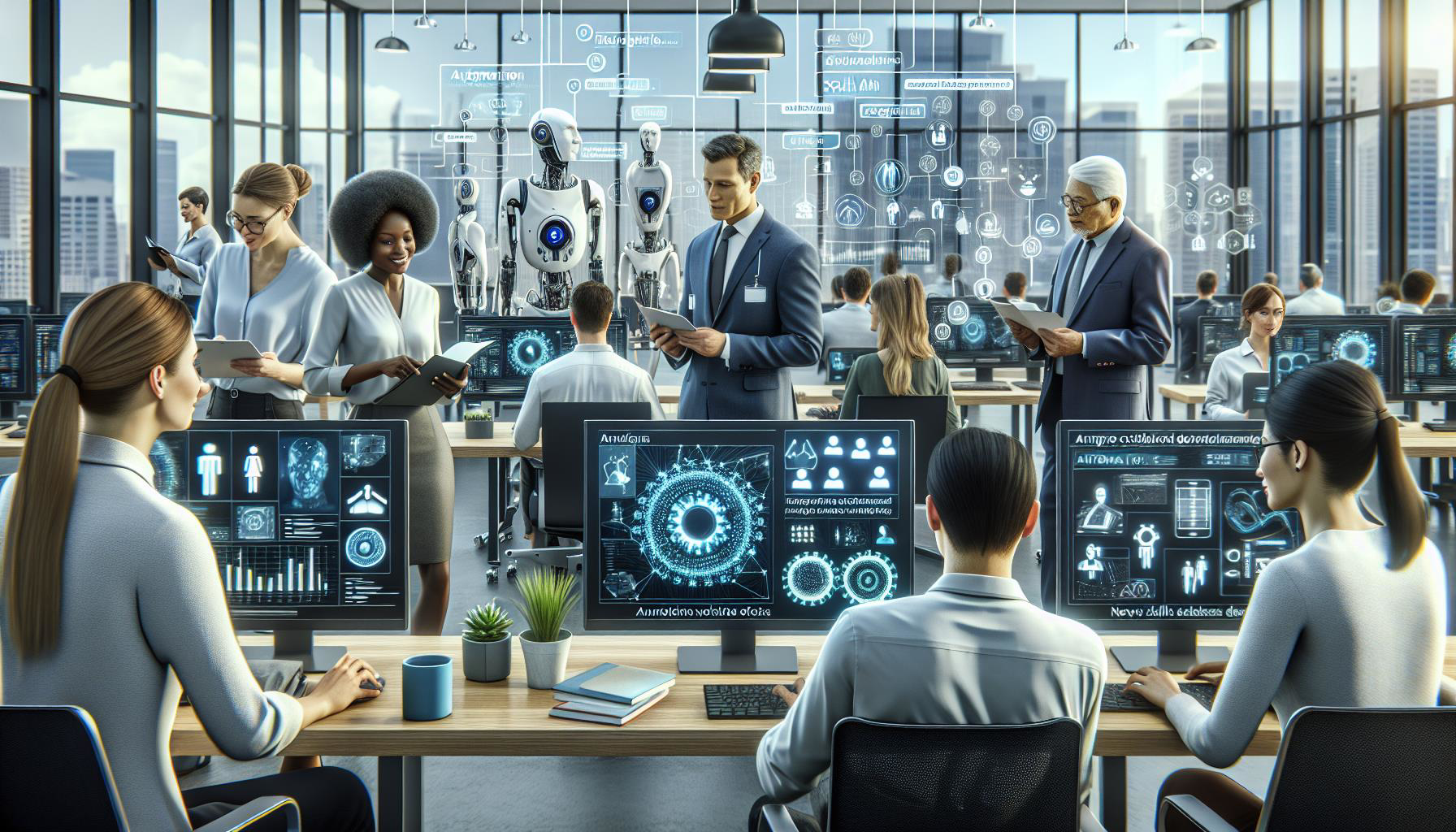Introduction
Artificial intelligence (AI) is rapidly becoming an integral part of the modern workplace. By assisting employees with various tasks and improving overall efficiency, AI tools are transforming how businesses operate. From automating routine processes to analyzing large datasets and providing insights that inform decision-making, AI is enabling workers to focus on more strategic and creative aspects of their jobs.
Automating Routine Processes
One of the most significant contributions of AI in the workplace is its ability to automate routine processes. Tasks that were once time-consuming and repetitive, such as data entry, scheduling, and basic customer service inquiries, can now be handled by AI systems. This automation not only speeds up these processes but also reduces the likelihood of human error, leading to more accurate and efficient operations.
Data Analysis and Insights
AI excels at analyzing large datasets quickly and accurately. By processing vast amounts of information, AI tools can identify patterns and trends that might be missed by human analysts. These insights can inform decision-making, helping businesses to optimize their strategies and operations. For example, AI can analyze customer data to identify purchasing trends, enabling companies to tailor their marketing efforts more effectively.
Enhancing Decision-Making
AI’s ability to provide data-driven insights is invaluable for decision-making. By leveraging AI tools, managers and executives can make more informed decisions based on real-time data and predictive analytics. This leads to better outcomes and a more agile response to market changes. AI can also simulate various scenarios, helping businesses to anticipate potential challenges and opportunities.
Focusing on Strategic and Creative Tasks
With AI handling routine and data-intensive tasks, employees can focus on more strategic and creative aspects of their jobs. This shift allows workers to engage in higher-level thinking, problem-solving, and innovation. By freeing up time and mental resources, AI enables employees to contribute more meaningfully to their organizations.
Improving Customer Service
AI-powered chatbots and virtual assistants are revolutionizing customer service. These tools can handle a wide range of customer inquiries, providing quick and accurate responses. By automating routine customer interactions, AI allows human customer service representatives to focus on more complex issues, improving overall customer satisfaction.
Streamlining Recruitment and Onboarding
AI is also making significant strides in the recruitment and onboarding process. AI-driven tools can screen resumes, conduct initial interviews, and even assess candidates’ fit for a role. This streamlines the hiring process, reducing the time and resources needed to find the right talent. Additionally, AI can assist with onboarding by providing new employees with personalized training and resources.
Enhancing Collaboration and Communication
AI tools are enhancing collaboration and communication within organizations. AI-powered platforms can facilitate virtual meetings, manage project workflows, and provide real-time language translation. These capabilities help teams to work more efficiently and effectively, regardless of their physical location.
Optimizing Supply Chain Management
AI is playing a crucial role in optimizing supply chain management. By analyzing data from various sources, AI can predict demand, optimize inventory levels, and identify potential disruptions. This leads to more efficient supply chain operations, reducing costs and improving customer satisfaction.
Ensuring Cybersecurity
AI is enhancing cybersecurity by detecting and responding to threats in real-time. AI-driven security systems can identify unusual patterns of behavior, flagging potential security breaches before they cause significant damage. This proactive approach helps organizations to protect their sensitive data and maintain the integrity of their operations.
Addressing Job Displacement Concerns
While AI offers numerous benefits, its increasing presence in the workplace raises concerns about job displacement. As AI automates more tasks, some roles may become obsolete. However, this also creates opportunities for new roles that require different skill sets. Organizations must address these concerns by investing in employee training and development to ensure a smooth transition.
Investing in Employee Training and Development
To maximize the benefits of AI, organizations should invest in employee training and development. By providing employees with the skills needed to work alongside AI, businesses can ensure that their workforce remains relevant and capable. This investment in human capital is essential for fostering a collaborative environment where humans and AI can work together effectively.
Fostering a Collaborative Environment
Creating a collaborative environment where humans and AI work together is key to achieving greater productivity and innovation. By leveraging the strengths of both human intelligence and artificial intelligence, businesses can unlock new possibilities and drive growth. This collaboration requires a cultural shift, with organizations embracing AI as a valuable partner rather than a threat.
Conclusion
AI is transforming the modern workplace by enhancing efficiency, improving decision-making, and enabling employees to focus on more strategic and creative tasks. While the integration of AI raises concerns about job displacement, organizations can address these challenges by investing in employee training and fostering a collaborative environment. By embracing AI as a valuable partner, businesses can achieve greater productivity and innovation, positioning themselves for success in the digital age.
References
1. “Artificial Intelligence: A Guide for Thinking Humans” by Melanie Mitchell
2. “Human + Machine: Reimagining Work in the Age of AI” by Paul R. Daugherty and H. James Wilson
3. “AI Superpowers: China, Silicon Valley, and the New World Order” by Kai-Fu Lee
4. “Prediction Machines: The Simple Economics of Artificial Intelligence” by Ajay Agrawal, Joshua Gans, and Avi Goldfarb
5. “The Fourth Industrial Revolution” by Klaus Schwab
